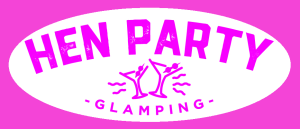How To Easily Use a Semicolon
Semicolons often elicit a mixture of curiosity and fear amongst even some seasoned writers. Whether your writing is limited to college papers and job applications or you regularly type up blog entries or fiction, it’s good to understand how they function so you can add some flavor to your work and help it stand out.
The Basic Functions of a Semicolon
As its shape suggests, a semicolon is a kind of hybrid of the period and comma. It acts a halfway house between the end of a sentence and the softer function of a comma, which tends to link or expand on the same idea. By contrast, a semicolon can link together two separate ideas in clauses where a period wouldn’t be quite right, e.g., “Everyone thinks guitars are cool; I prefer the banjo.”
It can also be used to connect items in a list to avoid confusion where commas are also needed, e.g., “This music academy specializes in two different stringed instruments: the guitar, which can be electric or acoustic; or the banjo, which is less popular but great for country music lovers.”
Similarly, in a sentence with lots of commas, they can be used to link two clauses without turning a sentence into a huge mess of commas: “The academy can accommodate different guitar types, whether electric or acoustic; but if you play the banjo, we can also help you with that.”
Finally, semicolons can connect two clauses separated by things like “as a result,” “given this,” or “therefore,” as in “We let musicians choose their own specialties; as a result, we find that students become masters in instruments they love.”
Common Mistakes
One of the most common errors is to use a comma when a semicolon is needed. If you’re not sure, then it can often be better to stick to using a period.
For example:
Incorrect: I like banjos, however, they’re a fairly niche instrument.
Best: I like banjos; however, they’re a fairly niche instrument.
OK: I like banjos. However, they’re a fairly niche instrument.
The first example is incorrect because it involves linking together independent parts of the sentence, which a comma alone shouldn’t do. Because “however, they’re a fairly niche instrument” could be a sentence on its own, and directly links to the part before it, a semicolon or period works well here.
It’s also possible to incorrectly mix them up the other way around:
Incorrect: Because I play the banjo; people think I’m cool.
Best: Because I play the banjo, people think I’m cool.
OK: I play the banjo. People think I’m cool.
Notice how the semicolon abruptly cuts the sentence in half. The first part of the sentence
depends on the second part, and because the first part is incomplete and cannot stand alone, a comma is best here.
Overall, semicolons don’t have to be complicated. By understanding how sentences should flow, which is best achieved by reading a lot and seeing how punctuation is used in professional writing, it’s possible to master the use of the semicolon. If in doubt, it’s sometimes best to re-write the sentence with a period. Those who have difficulty here can try reading their sentences slowly to see if the flow is natural or not.










